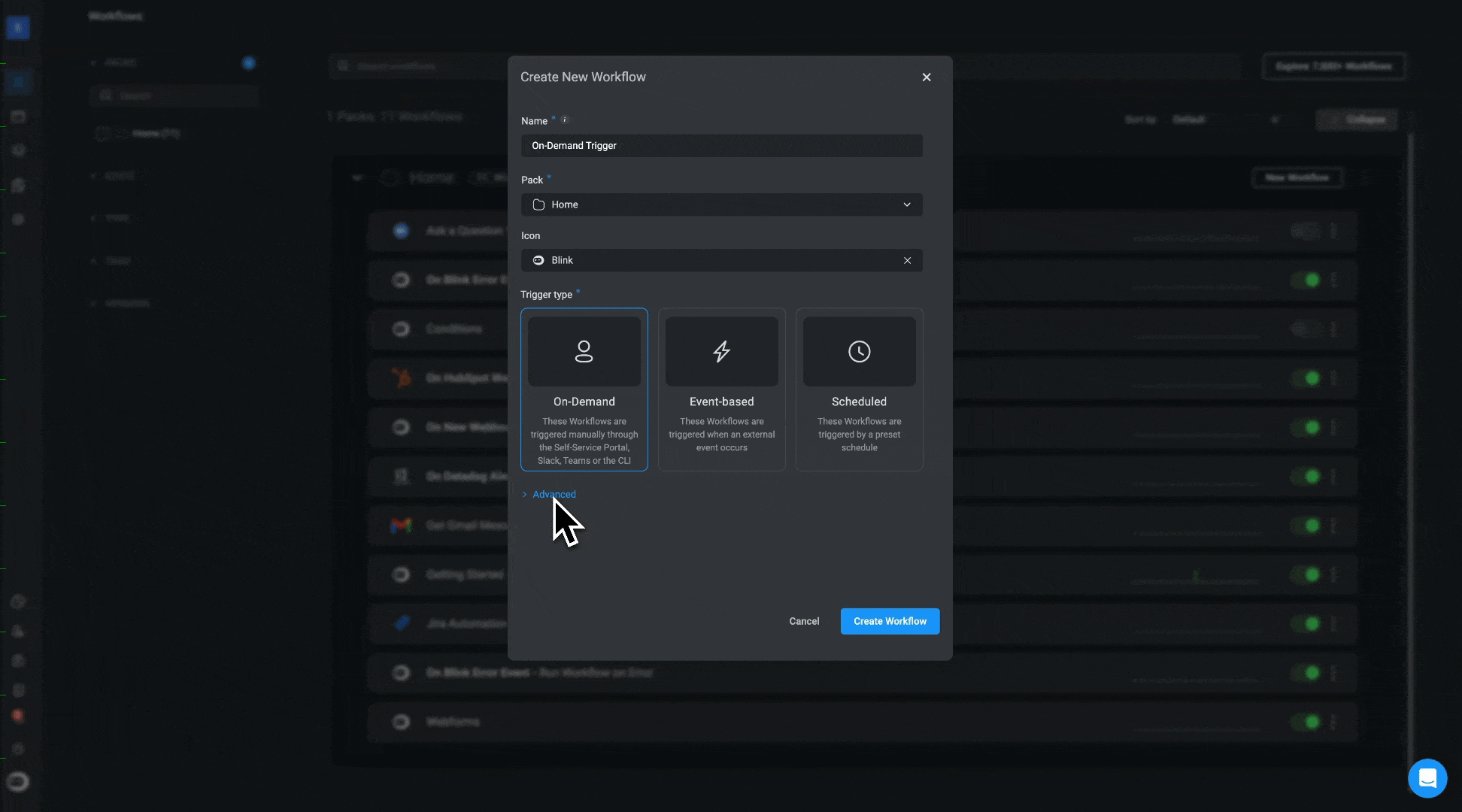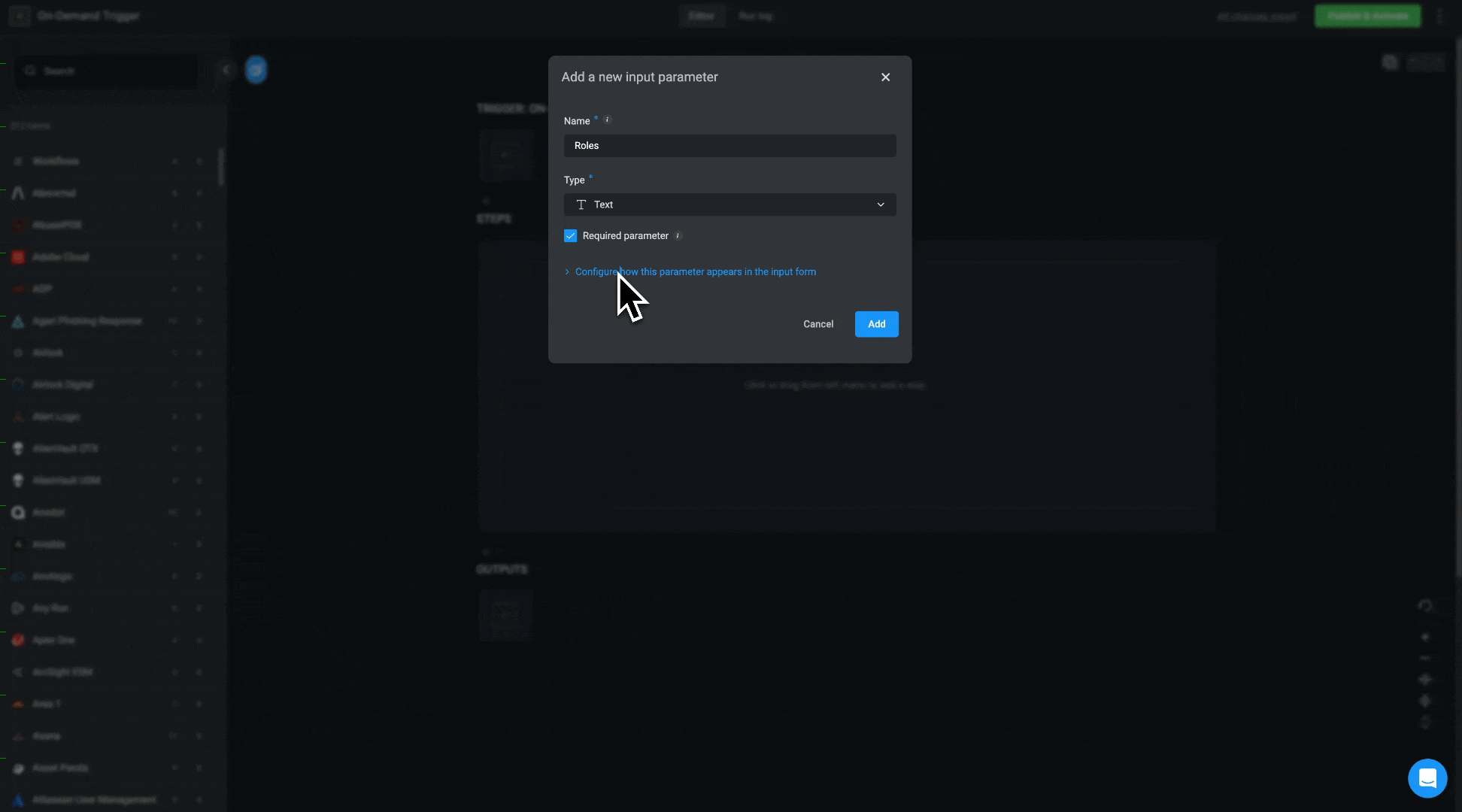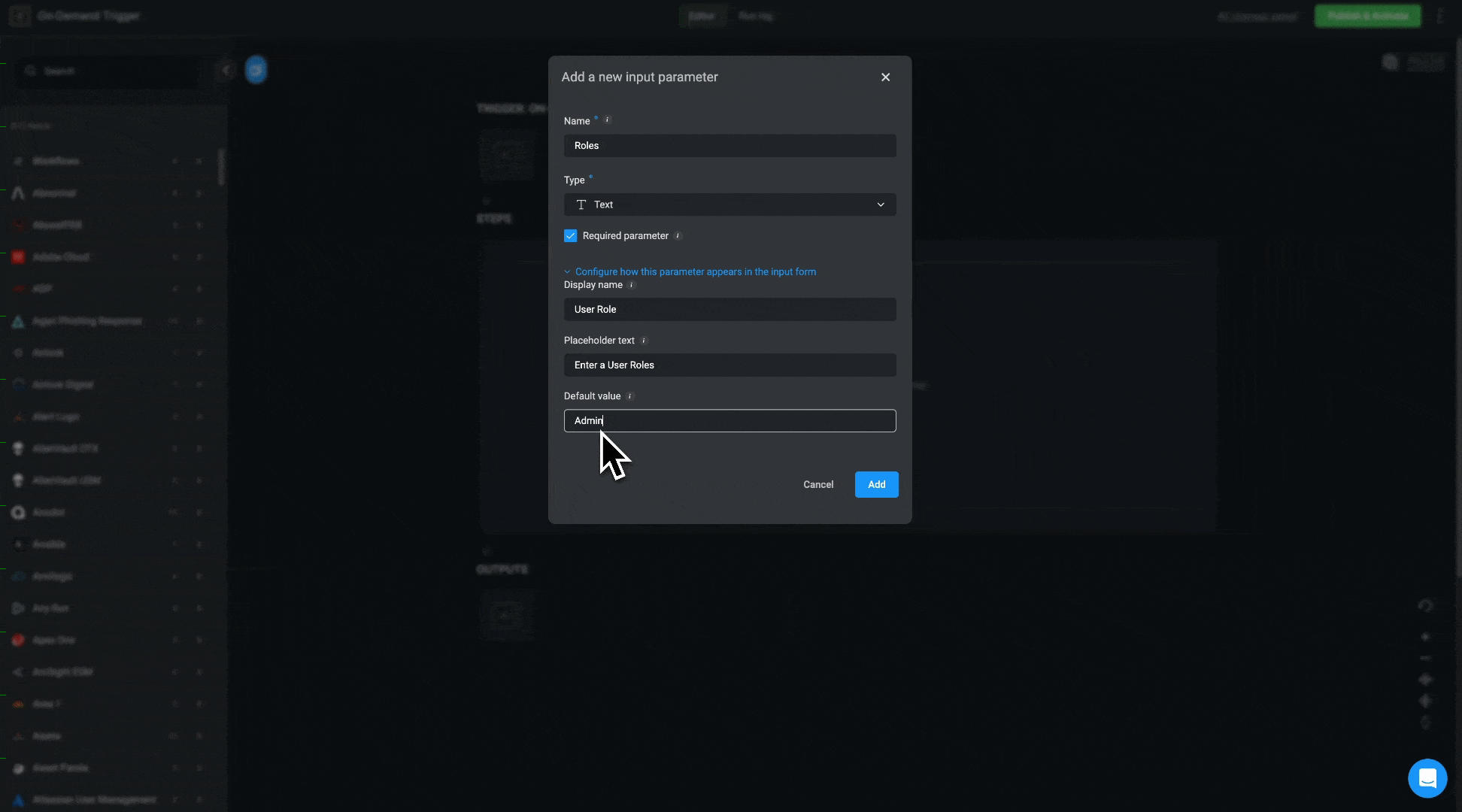How this Helps
On-demand workflows are useful for running tasks that need to be executed immediately or at the user’s discretion. They provide flexibility and control over when specific workflows are triggered, making them ideal for scenarios where timing is critical or user input is required.
| Interface | Description |
|---|---|
| Manual Trigger | Users with access to the Blink platform can also trigger workflows manually. |
| Self-Service Portal | Allows authorized users to trigger workflows through a dedicated UI. |
| Slack & Microsoft Teams | Enables workflow execution directly from messaging platforms. |
| Subflows | Workflows that can be used when triggered by a parent workflow, typically useful when the subflow is an action that is needed by more than one parent workflow. |
The file input parameter is not supported in triggered subflows.
Need help finding the right trigger type for your use case? See About Triggers.
Create an On-Demand Workflow
-
Create a new workflow, and select On-Demand when prompted.
Once you click Create Workflow, the canvas loads with your initial configurations. The first part of the workflow appears as Trigger: On-Demand.

-
In the Workflow Editor, locate the Trigger: On-Demand section and click + to configure when triggering the workflow.
-
Enter a memorable name for the trigger and enter the type. Optionally, mark the Required parameter checkbox.

-
To customize how the input appears in the form, click Configure how this parameter appears in the input form and modify the Display name, Placeholder text, and Default value.

-
Click Add to save the input parameter and close the window.
Now that you’ve set up the trigger, it’s time to finish configuration of the workflow.
